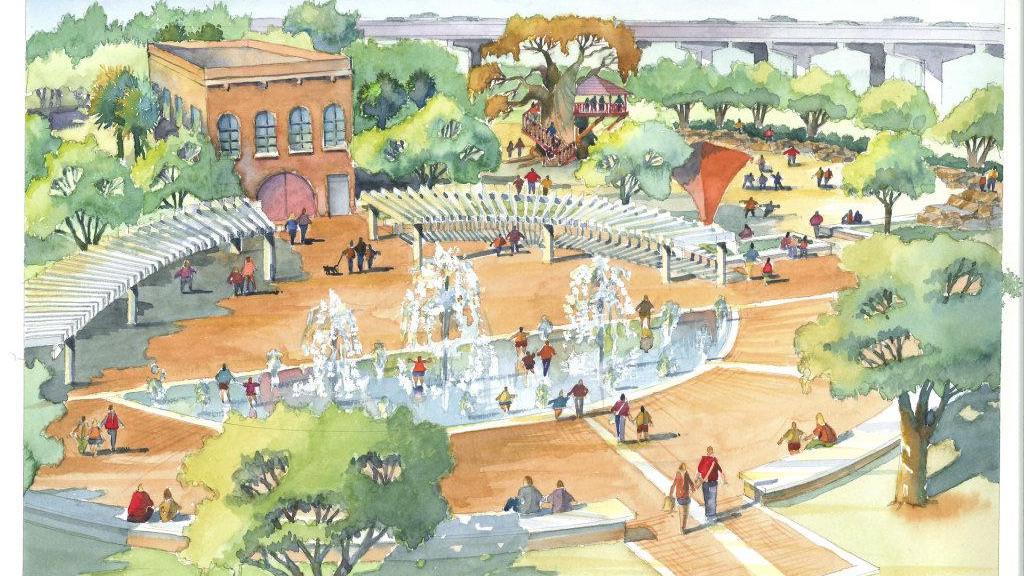By the Riverfront Parks Now Coalition
Note: A version of this article appeared in the Florida Times Union’s Sunday Reason edition on July 4, 2021, edited for length.
Jacksonville is clearly at a defining crossroads, and consequential decisions involving downtown development will be made in the near future. As such, we implore city leaders to recognize what is at stake: the last, best chance to create an iconic “Riverfront for All” in downtown Jacksonville. This chance will not come around again for a generation or more.
The thirteen civic groups that comprise the Riverfront Parks Now advocacy coalition firmly believe that Jacksonville should follow the lead of dozens of other cities that have successfully combined signature riverfront parks, connected trails and well-designed Riverwalks to attract residents, visitors, events, and developer investment, while also providing protection from sea level rise and flooding.
This proven approach will cost less and give us more. Riverfront parks yield returns on investment that are superior and longer term than traditional development. What’s more, they improve the quality of life for city-wide residents of all socio-economic groups, not just those who are fortunate enough to live or work on the river.
Other river cities have faced similar forks in the road. Civic, business, and elected leaders from these cities, including Chattanooga, St. Petersburg, and Greenville have all recognized the wisdom of their decisions to prioritize public space. In fact, these destinations have become great sources of civic pride and economic growth.
We can, and should, do the same thing for our residents and business owners here in THE River City.
A 10-Point Plan to Create A Riverfront for All:
- Prioritize Public Space. First and foremost, we must prioritize and designate meaningful public riverfront parks and green spaces – spaces that will provide value and enjoyment for the next 100 years, as Memorial Park has done.
- Go Big, World-Class, and Inclusive. We must engage a world-class landscape architecture/urban design firm to design an iconic downtown destination park of at least 40 connected acres between Metropolitan Park and the Shipyards. We need spaces that are welcoming and accessible to all people and provide ways for the community to come together at the river. This requires sufficient space to support a variety of activities and amenities for our diverse community.
- Protect Connectivity. Preserve a continuous ribbon of green spaces and connected parks along the expanded Northbank Riverwalk. The Riverwalk should be well-connected to the Emerald Trail, running from Memorial Park to Metropolitan Park and should be generous enough in size to allow for multiple paths for bikers and pedestrians, shade, and plantings.
- Let our River Breathe. It is essential to significantly expand the setbacks from 25’ to at least 175’ for all new development on city-owned property along the St. Johns River to allow for a continuous ribbon of natural green space, which will also protect against flooding. Buffers along Hogan’s Creeks and McCoy’s creeks should also be considered.
- Utilize Green Resilient Solutions. When planning for stormwater management and climate change, rather than just choosing to “build up,” Jacksonville should implement proven green solutions for stormwater management and to mitigate sea-level rise, storm surge and climate change. Plant an abundance of shade trees to protect against the heat, add beauty, and help slow and filter runoff.
- Don’t Block Our Existing Views. We support robust development across Bay Street which maximizes the benefits for both the development and the public to enjoy the park amenities and river views. Any structure on the river side of the street should directly enhance the public uses and be located along Bay Street, leaving a green buffer of at least 175’ from the river as set forth above.
- Make Streets into Boulevards. Transform Bay Street and A. Philip Randolph into pedestrian-friendly, tree-lined boulevards incorporating wide sidewalks, planted medians, shade and street furniture. This will successfully create natural and welcoming streetscapes between the core of downtown and the stadium.
- Plan for Maintenance. Model cities have demonstrated that the creation of a Conservancy is an optimal solution for the ongoing maintenance of riverfront parks.
- Riverfront Playing, Not Parking. Refrain from building visible parking structures between Bay Street and the river.
- Plan for the Jacksonville We All Desire. This is a game-changing opportunity for the city, not just an amenity for a downtown neighborhood. By planning a well-designed, visually interesting public space with a variety of attractions and amenities, our riverfront can entice people from all over Jacksonville, no matter the income level, to come and spend the day with friends, family or by themselves.
Let’s make sure we have ample space not only for play areas, cafes and bars, native plants, and cultural activities, but also for hosting large events, concerts, tailgates, and festivals such as our future Super Bowl, NFL Draft, College Football Championship, Gator Bowl, and Florida-Georgia parties!
Scenic Jacksonville is a founding member of Riverfront Parks Now coalition.


